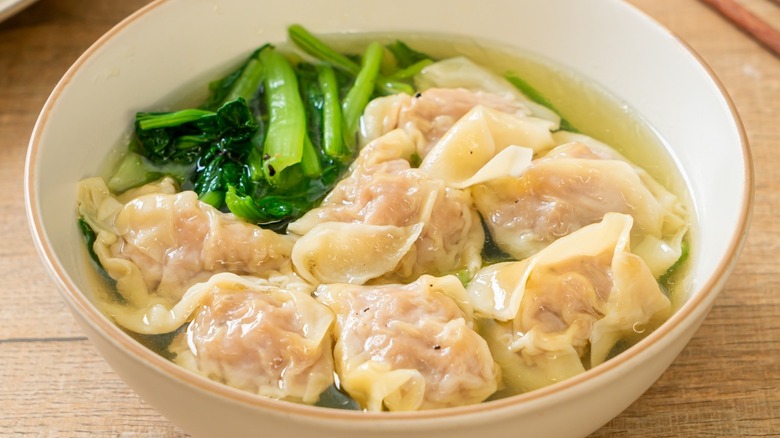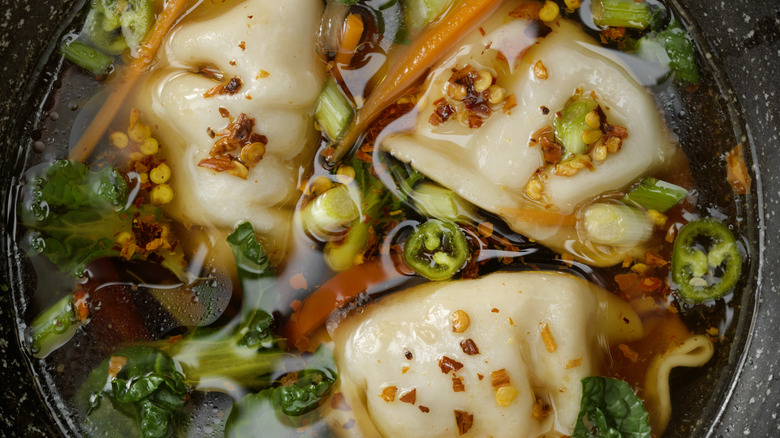Transform Those Frozen Potstickers Into An Easy, Steamy Wonton Soup
Frozen food is seen by over 80% of consumers as being a way to save money and as a way to reduce food waste. But, unless you are well-practiced at making perfect potstickers from frozen, you'll probably waste quite a few. Either you'll undercook the filling, the skins, or some of them will stick to the pot too much, burning on the bottom and tearing open when you try to coax them from the pan. The problem with using frozen potstickers is that you're trying to reheat, steam, and fry at the same time. Depending on your heat source, your pan, your lid, and even the volume of liquid you add, there can be wild variation in how each separate process goes. Take the guesswork out of it by ignoring the name on the packaging and using your pre-packed parcels of goodness to make a hot, satisfying bowl of wonton soup.
To make the best easy frozen potsticker wonton soup, simply boil 2 cups per serving of chicken stock, miso soup, or just water with a pack of your favorite ramen flavoring added. To this soup base, add five or six frozen dumplings and bring it back to a boil. Once it's boiling again, just cook for five to six minutes until the potstickers are cooked through and you're ready to serve! Because the potstickers are stuffed with pre-seasoned fillings, that's enough to make a simple, satisfying soup. But it only takes a few extra stir-ins to make that soup really sing.
Simple tweaks to make your frozen potsticker wonton soup wonderful
Use the best soup base you can and pork-containing dumplings if possible for your diet, because they impart richness to the broth as they cook. Chop scallions or onions finely and sweat them for a minute or two in the pot before you add the broth to give inexpensive sweetness and fragrance to your dish. For bite and spice, add a little garlic, ginger, or chili before or after cooking. Aromatics and stocks can be frozen as well, ensuring a constant supply of soup in the freezer. You'll want to season your soup with soy or fish sauce, for both the saltiness and umami that's key in Asian broths, and if you enjoy the subtly toasty flavor of sesame oil, a few drops will take your wonton soup to the next level.
In terms of extra vegetables, go with what you enjoy and have access to. Fresh Asian vegetables like bok choy or napa cabbage are great, but frozen sweetcorn or peas are just as valid and will make just as good an addition to your soup and diet.
Finally, salty soups benefit from a hint of acid to make them moreish, rather than moribund. A spritz of citrus or a splash of vinegar will work — but for maximum affordability, authenticity, health, and shelf life, find an Asian fermented vegetable you enjoy and use that. They cover all the bases and add a layer of complexity and legitimacy that's unrivalled.

